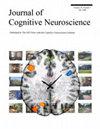揭穿认知神经科学研究中兴奋性和抑制性重复经颅磁刺激的神话。
IF 3
3区 医学
Q2 NEUROSCIENCES
引用次数: 0
摘要
重复性经颅磁刺激(rTMS)是一种强大的神经科学工具,具有无创识别人类大脑行为关系的潜力。早期的研究表明,某些rTMS方案(如连续的θ -burst刺激、间歇的θ -burst刺激、高频rTMS、低频rTMS)可预测地改变皮层神经元激发动作电位的概率(即改变皮层兴奋性)。然而,尽管在过去的几十年里,rTMS研究在方法、概念和技术上取得了重大进展,但对早期rTMS研究结果的过度概括导致了一种顽固的假设,即rTMS方案本质上诱导行为和/或生理抑制或促进,即使它们被应用于非运动皮质部位或未经测试的情况下。在这篇展望文章中,我们提供了一个“公共服务公告”,总结了这些假设的问题,强调了启发这些假设的开创性研究的局限性,以及违反这些假设的当代研究的结果。接下来,我们将讨论与持有这些假设相关的问题,包括在不确定神经生理变化的局部性和方向性的情况下进行脑行为推断。然后,我们强调最近的研究结果表明,rTMS对神经生理指标及其相关行为的影响可能是由受刺激的大脑区域或网络的兴奋性的二元变化以外的机制引起的。最后,我们为研究人员提供了一些建议,以消除在设计和解释他们自己的工作时,特定的rTMS协议本质上是兴奋性或抑制性的错误假设。总的来说,我们认为没有rTMS方案在本质上是兴奋性或抑制性的,研究人员在形成实验假设和测试大脑-行为关系时必须谨慎使用这些术语。本文章由计算机程序翻译,如有差异,请以英文原文为准。
Debunking the Myth of Excitatory and Inhibitory Repetitive Transcranial Magnetic Stimulation in Cognitive Neuroscience Research
Repetitive TMS (rTMS) is a powerful neuroscientific tool with the potential to noninvasively identify brain–behavior relationships in humans. Early work suggested that certain rTMS protocols (e.g., continuous theta-burst stimulation, intermittent theta-burst stimulation, high-frequency rTMS, low-frequency rTMS) predictably alter the probability that cortical neurons will fire action potentials (i.e., change cortical excitability). However, despite significant methodological, conceptual, and technical advances in rTMS research over the past few decades, overgeneralization of early rTMS findings has led to a stubbornly persistent assumption that rTMS protocols by their nature induce behavioral and/or physiological inhibition or facilitation, even when they are applied to nonmotor cortical sites or under untested circumstances. In this Perspectives article, we offer a “public service announcement” that summarizes the origins of this problematic assumption, highlighting limitations of seminal studies that inspired them and results of contemporary studies that violate them. Next, we discuss problems associated with holding this assumption, including making brain–behavior inferences without confirming the locality and directionality of neurophysiological changes. Finally, we provide recommendations for researchers to eliminate this misguided assumption when designing and interpreting their own work, emphasizing results of recent studies showing that the effects of rTMS on neurophysiological metrics and their associated behaviors can be caused by mechanisms other than binary changes in excitability of the stimulated brain region or network. Collectively, we contend that no rTMS protocol is by its nature either excitatory or inhibitory, and that researchers must use caution with these terms when forming experimental hypotheses and testing brain–behavior relationships.
求助全文
通过发布文献求助,成功后即可免费获取论文全文。
去求助
来源期刊
CiteScore
5.30
自引率
3.10%
发文量
151
审稿时长
3-8 weeks
期刊介绍:
Journal of Cognitive Neuroscience investigates brain–behavior interaction and promotes lively interchange among the mind sciences.

 求助内容:
求助内容: 应助结果提醒方式:
应助结果提醒方式:


